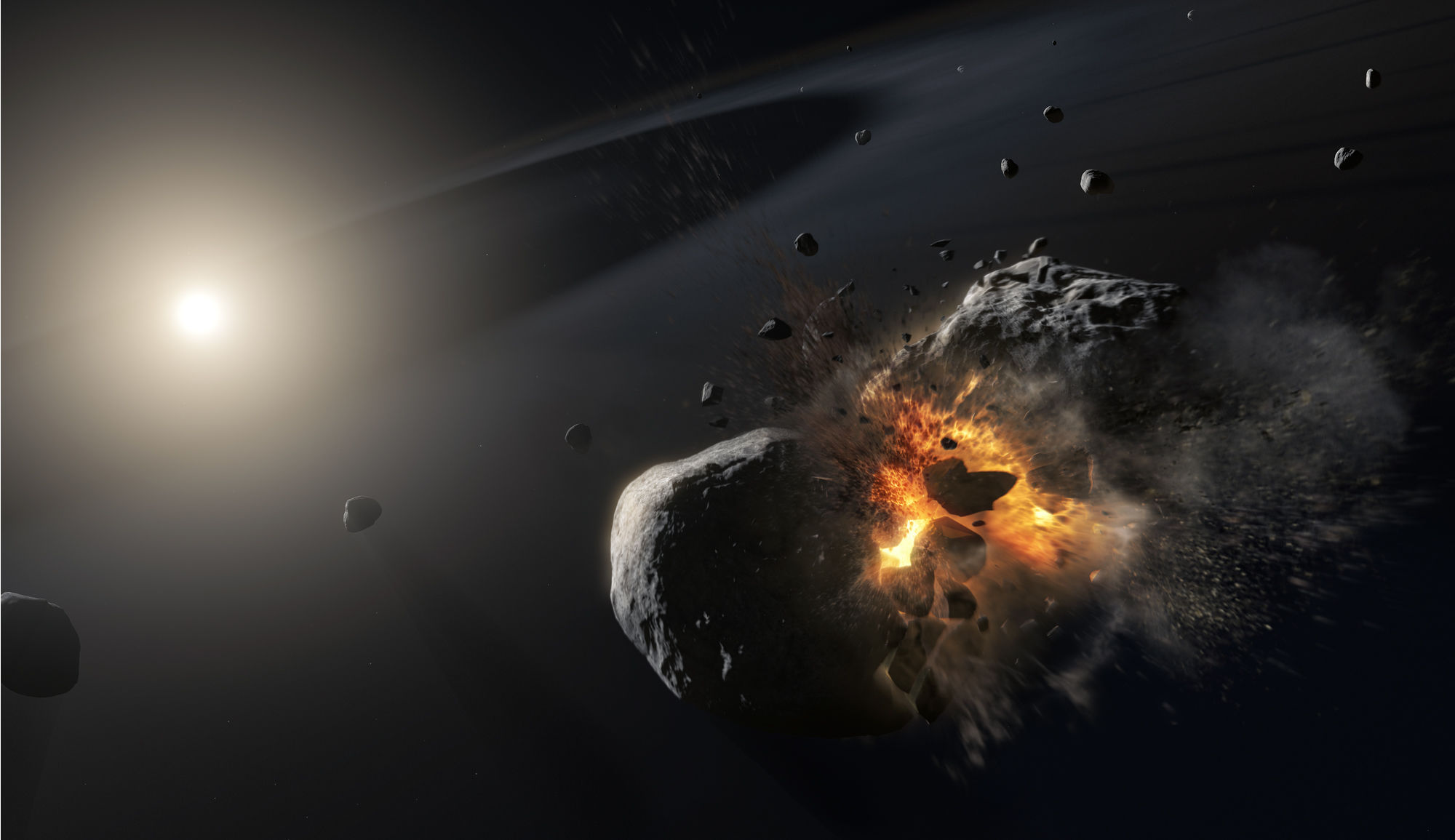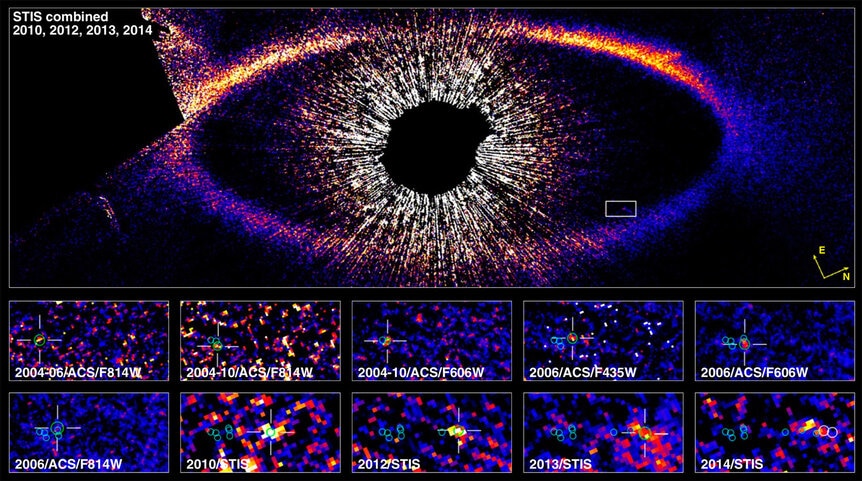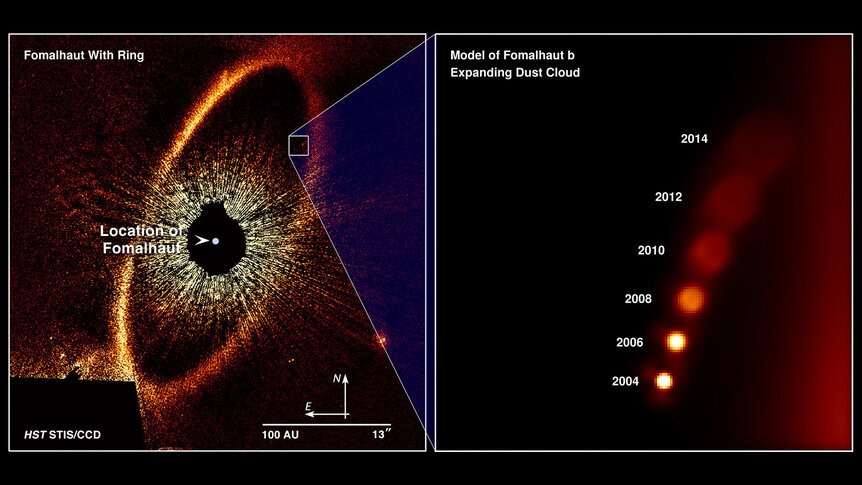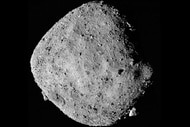Create a free profile to get unlimited access to exclusive videos, sweepstakes, and more!
Fomalhaut's 'planet' may actually be a dust cloud from a giant asteroid collision!

In 2008 astronomers made a huge announcement: A giant exoplanet had been seen visually in Hubble images of the bright nearby star Fomalhaut! It was very exciting news; most planets at that point (and still today) are detected indirectly, so physically seeing one in an image was a Very Big Deal.
Also, Fomalhaut is only 25 light years away, one of the brightest stars in the sky, easily visible to the naked eye, and very young, just a few hundred million years old. It's also surrounded by a huge ring of dust making it look a lot like the Eye of Sauron, which many people (including me) had a lot of fun with.
The planet, called Fomalhaut b, was even seen to move in observations between 2004 and 2010, confirming it was a real object.
… but then, trouble. Observations using Spitzer Space Telescope were distressingly blank, when the planet should have been bright in infrared. But the images showed nothing. There is definitely something there in the Hubble images, but now no one was sure what. Maybe a planet surrounded by a dust cloud, perhaps due to moons colliding?
Now, a new paper has come out by a pair of astronomers making a claim that is equal parts bummer and even cooler: It's not a planet at all (bummer); it's the expanding dust of two large asteroids that collided at high speed!
Even cooler.
To be clear, this is still a hypothesis, an idea, but their analysis of the Hubble images shows that the observations are consistent with an event like this. And it's compelling, too.
The idea is based on three conclusions from their analysis: 1) The object is moving out of the star's system, 2) it’s getting bigger, and 3) it’s fading.
Looking at Hubble data taken from 2004 to 2014 using the Advanced Camera for Surveys and the Space Telescope Imaging Spectrograph, they were able to measure the position of the object over time. From that, an orbit can be calculated, and they find that it appears to be moving rapidly enough to escape from Fomalhaut. That would be pretty unlikely for a planet, but possible for debris from two asteroids colliding. A lot of the smaller grains of dust generated in such an impact would feel an outward force due to the bright light from Fomalhaut (which is bigger, more massive, and about 16 times as luminous as the Sun). Over a few years they could feel enough acceleration from this force to become unbound, achieving escape velocity.
Looking at the data over time, they can also see that the object is an unresolved dot in early images but clearly extended in later ones, indicating that it's expanding. That’s what you'd expect from a cloud of debris from a collision. Also, it gets fainter with time, which again makes sense. Once a debris cloud expands to a certain size the drop in density makes it fade; it disperses too much to catch the starlight and efficiently reflect it.
This idea is pretty provocative. But does it make physical sense? Can two asteroids whack into each other hard enough to make a cloud like this?
According to models the authors ran, yes. It would take two very large rocks, certainly larger than 100 km and more likely up to 200 km (or one smaller one if the other one is much bigger), colliding at speeds of 200–600 meters per second (~700 to 2200 kph) to generate that much dust. Those relative speeds are entirely reasonable for asteroids at that distance from the star (about 15 billion kilometers, about 3 times the distance of Neptune from the Sun).
So their idea is internally consistent and does appear to be consistent with the observations as well. My biggest issue with it is that events this big are rare — the authors calculate it happens roughly once every 200,000 years at Fomalhaut — and had to happen not very long before the first observations in 2004. Scientists in general take pause when you need to plead special circumstances; we prefer general cases. But this case really does look special. The rates of fading and expansion really do indicate it must have happened very recently, and we just got lucky. It's certainly not impossible, but it's always good to maintain a reasonable level of skepticism.
What's next then? The obvious next step is to get more observations. That's unlikely for Hubble; the last set of observations taken in 2014 showed the object had faded to invisibility. But James Webb Space Telescope will launch soon (for sufficiently broad definitions of "soon") and they have observations scheduled for the first year the telescope is working! That's exciting. Webb should be powerful enough to detect it and hopefully clear this all up.
This is the nature of pushing observations to the edge. We don't always know what we'll get, even after we get it! The identification of Fomalhaut b as a planet, then not, then back again, then something else, and now maybe a debris cloud, is pretty much par for the course. Something like this happens a lot when we build new observatories and push them as hard as they can be pushed in a field (like exoplanet exploration by direct imaging) that is just getting its start.
There's a reason it’s called the cutting edge. And there's a reason we call it exploration. If we knew what we'd get, it wouldn't be.


















